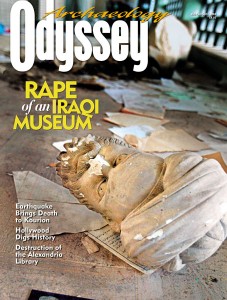
In the mid-second millennium B.C., Cyprus lay at the center of a vigorous eastern Mediterranean trade in metals, particularly the copper and tin used to make Bronze Age bronze. Contemporaneous texts from Syria and Egypt refer to the land of “Alashiya”—identified by most, but not all, scholars as Cyprus—in connection to copper.a
It is not known when Kourion was first settled. Although a nearby cemetery contained Mycenaean artifacts from the 11th century B.C., it seems likely that remains of the earliest settlement are buried beneath the extensive Roman-period ruins. Kourion is first mentioned in the written record by the Assyrian king Esarhaddon (680–669 B.C.), whose boastful list of vassals includes “Damasu, king of Kuri (Kourion).”
In the late-seventh and sixth centuries B.C., the emerging power on the Greek mainland, Athens, clashed with Persian Achaemenids for control of Cyprus. (The Persians eventually won.) It was during this period that the cult of the god Apollo—associated with woodlands, music and knowledge—was first celebrated at Kourion. (In fact, as early as the eighth century B.C., the site of the sanctuary dedicated to Apollo had been a sacred precinct honoring a now-unknown god who probably represented cycles of death and rebirth.)
Already a library member? Log in here.
Institution user? Log in with your IP address.

